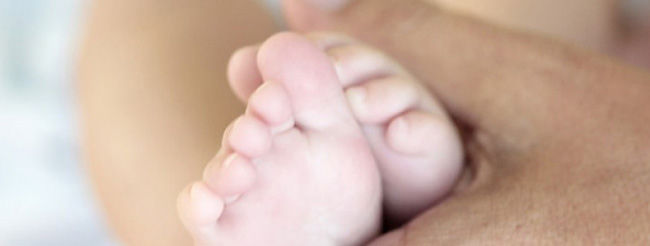
When a child is born, tests dictated by traditional medicine are performed, and the baby is delivered to the happy parents. They are given basic guidelines for this and other checkups to be done for the baby and… everybody goes home.
At home, the baby doesn´t sleep well, cries constantly, is constipated, has colic, has trouble breathing, etc.
When faced with these types of situations, the parents go to a pediatrician, who, after checking that the baby doesn´t have fever or ear/nose/throat infections, calms the parents by telling them: “your baby doesn´t have anything, it will pass in a few days.” Those days, however, sometimes become months or even years. Sometimes, this pathology, which can be diagnosed and treated, will mark a person for life.
Children and newborns suffer all types of pain (headaches, joint pain, stomach, etc.). The can become stressed, depressed, and in fact suffer the same pathologies as adults. The only problem is that newborns and small children cannot speak, complain, or explain like adults. They simply cry, don´t sleep well, regurgitate, don´t eat, vomit, and suffer from mucus, allergies, respiratory conditions, etc.
Pediatricians, midwives, osteopaths, and indeed any person connected with the health and care of children, should know that 9 out of 10 newborns suffer pathologies capable of treatment by a qualified osteopath. Pathologies that, if ignored, can mark infancy, adolescence, and the adult stage of this living being, so often ignored.
Pediatric osteopathy is a branch of knowledge within osteopathy that should be obligatory for all osteopaths. High-level osteopathy, both in Europe and the USA, includes a basic knowledge of pediatrics in its training programs. For this reason we must be wary of the training received by any osteopath that does not include the knowledge necessary for treating a child.
Osteopathy offers a wide range of therapeutic possibilities to monitor, treat and support babies, children, and adolescents for a wide variety of conditions typical to each stage of life. The sweetness and quality of touch with which this type of manual techniques guarantees and rewards the trust that parents place in professionals who are dedicated to manual treatment of these little patients, their children.
The osteopathic focus on the pediatric patient is based in osteopathic philosophy and principles. Pediatric osteopaths used neuro-musculo-skeletal, cranial, and visceral assessment and treatment by manipulation oriented towards identifying, treating, and attempting to correct ineffective structural, cranial, and visceral mechanics.
Osteopathy dedicated to treatment of newborns and children permits, firstly, the recovery from illnesses and dysfunctions in our patients, and secondly, to thereby prevent the inevitable aftereffects that could affect their equilibrium and later development. It is important to note that the overwhelming majority of pathologies suffered by adults are untreated, inadequately treated, aftereffects of pathologies suffered during infancy.
